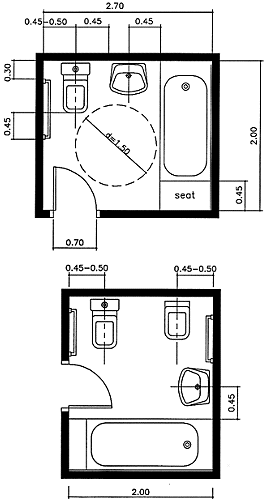

When the wheelchair rolls over the water retainer, it collapses down and then pops back up into place.Ĭollapsible water retainers and weighted shower curtains are being used today because of their functionality and ease of installation. The two-wall shower uses weighted shower curtains and a collapsible water retainer along the threshold of the floor to keep water in the shower and the bathroom floors dry. Blue trim was used in the tile to match the color of the bathroom.

This is a great feature because it allows grab bars to be added at a later time to any position on either wall because the necessary reinforcement is already in place.įiberglass showers do not have any grout which inhibits mold and makes them much easier to clean. The new shower is made of fiberglass and the entire unit has reinforced backing behind both walls. Because of the small space, we opted for a roll-in two-wall shower. The next challenge was to replace the unusable shower. It could also be moved to the “up” position allowing more space to roll in and out of the shower.

When in the horizontal position, the fold-down grab bar offered support for use with the toilet AND for use with the wheelchair accessible shower serving a dual purpose. Because we had already removed the shower, the wall was exposed down to the bare studs making the process easier and more cost efficient. It’s important to note that all grab bars require reinforced backing for support. For this situation, we used a fold-down grab bar which was attached to the wall behind the toilet. It also made it easier for people not in a wheelchair to get on and off the toilet.Īlthough moving the toilet created much more room to move in and out of the bathroom, it eliminated a sidewall to attach a grab bar. We added a “ Toilevator” below the toilet which raised it 3.5 inches and made it level with the wheelchair for easy sideways transfers. In fact, the entire wall became a sliding door which made the bathroom larger, almost like an extension of the bedroom.Īfter – with a raised toilet and stand-up handicap shower to accommodate a wheelchair user We then replaced the doorway and adjacent wall with a pocket door making one large doorway opening. By moving the toilet to this new position, it provided the space to create a bigger doorway opening. We removed the sink and reversed the plumbing for use with the toilet. Because the toilet was so close to the doorway, it didn’t offer the space needed to widen it enough for the wheelchair to pass through.

This saved some time and money which allowed us to add other elements. If a bathroom is small to begin with, a little creative redesign can make it not only more accessible, but safer and more practical for everybody.įor this job we used some of the existing plumbing instead of starting from scratch. The doorway was too narrow to allow a wheelchair through, it had a very small stand-up style shower making it unusable, the sink vanity would not accommodate a wheelchair, the toilet was too low and there was not enough room to turn the wheelchair around to exit the bathroom. From Small Bathroom Layout to ADA Bathroom Layout The client for this project was a 73-year old male stroke victim and above-the-knee amputee who uses a wheelchair. Recently, Accessible Design & Construction redesigned a very small bathroom to make it a completely handicap wheelchair accessible bathroom. Making a bathroom safe and handicap wheelchair accessible is an important first step when beginning an accessible home modification.


 0 kommentar(er)
0 kommentar(er)
